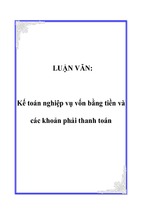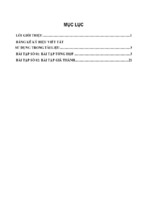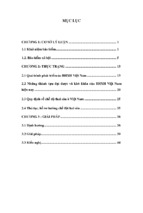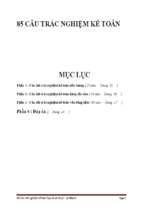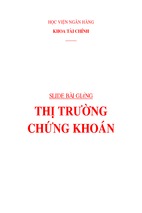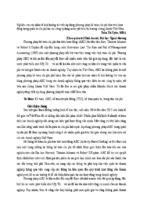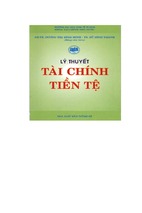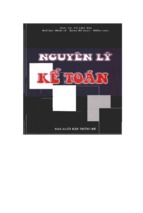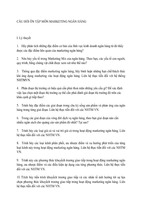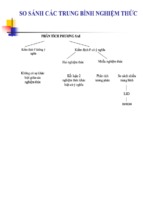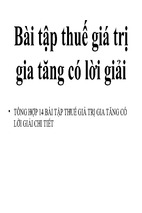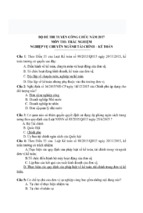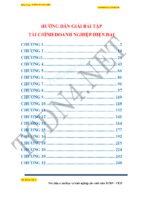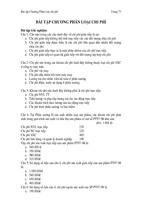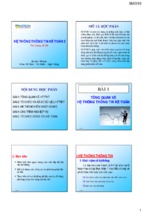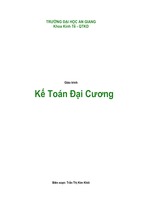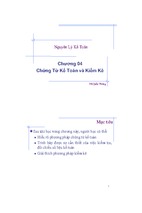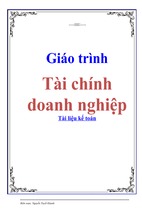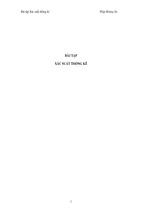International Research Journal of Finance and Economics
ISSN 1450-2887 Issue 146 March, 2016
http://www.internationalresearchjournaloffinanceandeconomics.com
Working Capital Requirement and Profitability: Evidence from
Seafood Processing Enterprises in the Khanh
Hoa Province of Vietnam
Nguyen Thanh Cuong
Corresponding Author, Faculty of Accounting and Finance
Nha Trang University, VietNam
E-mail:
[email protected]
Nguyen Thi Hong Nhung
Faculty of Accounting and Finance, Nha Trang University, Viet Nam
E-mail:
[email protected]
Abstract
Investment decisions in working capital is crucial for any business organization.
The purpose of this research is examining the relationship between working capital
requirement and firm’s profitability. A sample of 38 seafood processing enterprises in
Khanh Hoa province of Vietnam for a period of 9 years from 2006 to 2014 was selected.
Panel data methodology was employed and Generalized Method of Moments (GMM) was
used as estimation technique. The results show that there is an inverted U-shaped relation
between investment in working capital and firm's profitability. This finding implies that
there exists an optimal level of investment in working capital in order to maximize a firm's
profitability. Specifically, companies should not invest more than 32% of working capital
to total assets. To ensure and enhance the corporates’ profitability, optimal investment
range of working capital should be below 32%. In addition, study results also showed that
promoting revenue growth, improving asset efficiency and using reasonable financial
leverage can increase firm's profitability. From this results, the article proposes some
policies implications for seafood processing enterprises in Khanh Hoa province of Vietnam
in making investment decisions on working capital reasonably in order to maximize a
firm's profitability.
Keywords: Working Capital Requirement, Investment in working capital, Profitability
JEL code: G31, G32
1. Introduction
Making financing decisions is very important to firms. Investment decisions on working capital
involve in dealing with short term balance of current assets and current liabilities. The management of
current assets and current liabilities refers to working capital management. Working capital
management is a very important factor that affects firm’s profitability and risk, and thus affects firm’s
value (Shin and Soenen, 1998). On the other hand, according to Brigham and Houston (2011), about 60
percent of financial manager’s time is spent for management of working capital. Thus, companies can
maximize profit and minimize risk if managers understand the importance of working capital
management. In acknowledgement of this importance, most previous studies in different countries have
International Research Journal of Finance and Economics - Issue 146 (2016)
93
focused primarily on how investment in working capital affects a firm’s performance (e.g., Shin and
Soenen, 1998; Deloof, 2003; Lazaridis and Tryfonidis, 2006; Nobanee et al., 2009; Mohamad and
Saad, 2010; Gill et al., 2010; Dong and Su, 2010; Vijayakumar, 2011; Garcia, 2011; Mansoori and
Muhammad, 2012; Napompech, 2012; Ukaegbu, 2014; Baños-Caballero et al., 2014; among others).
Khanh Hoa province of Vietnam has many outstanding advantages to develop seafood
processing industry. This is one of the major export sectors of Khanh Hoa province. In the current
trend of integration, one of the problems posed to Khanh Hoa seafood processing enterprises is that
how to managing working capital to improve the company performance, contributing to increase
corporate’s value. To solve this problem, companies need to know the effect of working capital
management on firm’s profitability. Therefore, it is necessary to conduct a study to show that how
working capital requirement has impacted on firms’ profitability. This research focused on the
relationship between working capital requirement and firms’ profitability to help Khanh Hoa seafood
processing enterprises in building working capital investment policies timely consistent to improve
corporate performance, contributing to increasing corporate’s value.
This paper is divided into five sections. The next section reviews the previous literature and
develops testable hypotheses. In section 3, we describe our empirical model and data. The fourth
section presents the results of the empirical analysis. Finally, we summarize our findings and suggest
some implications in the last section.
2. Literature Review and Hypotheses
Investment decisions on working capital will focus on management of cash, inventories, accounts
payable and accounts receivable. Until now, researches on the relationship between investment in
working capital and company performance have been done many in international and Viet Nam. The
results of previous studies formed the different views about this relationship.
Shin and Soenen (1998) used Net Trade Cycle (NTC) as a measure of working capital
management. They discovered a negative relation between NTC and corporate’s profitability for a
sample of US firms in the period of 1975-1994. This result showed that managers should reduce cash
conversion cycle to a minimum point in order to obtain higher firms’ value. Lazaridis and Tryfonidis
(2006) used cash conversion cycle (CCC) as a measure of working capital management for a sample of
companies listed on Athens stock market in the period of 2001-2004 and have also found a negative
relationship between CCC and the gross profit margin. With the results of finding, they claimed that
managers should handle the cash conversion cycle correctly and keep each different of its component
to an optimum value to create value for shareholders. Garcia (2011) in Europe, Ukaegbu (2014) in
Africa, Nobanee et al. (2009) in Japan, Mohamad and Saad (2010) in Malaysia, Vijayakumar (2011) in
India, Mansoori and Muhammad (2012) in Singapore, Napompech (2012) in Thailan, Dong and Su
(2010) in VietNam also found the similar relationship between cash conversion cycle and profitability
of the company.
In contrast, the second point is that the more companies invest in working capital, the more
revenue increases, the time of payment is shorter and, therefore, that may increase the enterprises’
value (Deloof, 2003). Similarly, Gill et al. (2010) studied the relationship between working capital
management and profitability of 88 US firms listed on the New York Stock Exchange from 2005-2007
and also found a positive relationship between cash conversion cycle and profitability.
Recently, a third opinion is that there exists a optimal level of working capital investment
balance between costs and benefits in order to maximize the enterprise’s value. Specifically,BañosCaballero et al. (2014) used Net Trade Cycle (NTC) as a measure of working capital management.
They confirm a large and statistically significant inverted U-shaped relation between corporate
performance and working capital for a sample comprises non-financial quoted firms from the United
Kingdom in the period of 2001–2007.
Based on the empirical evidence on these, this paper aims to examine whether there exists the
optimal threshold between the level of investment in working capital and profitability of seafood
94
International Research Journal of Finance and Economics - Issue 146 (2016)
processing enterprises in Khanh Hoa province of Vietnam or not. Therefore, the hypothesis posed in
this study is: "there exists an optimal level of investment in working capital for the seafood processing
enterprises in Khanh Hoa province of Vietnam".
3. Empirical Model and Data
3.1. Specification of the Model and Estimation Methods
Based on the estimated model of Baños-Caballero et al. (2014), to test the hypothesis, we regress
corporate profitability against working capital requirement (WCR) and its square (WCR2). Additional
variables are also presented in the profitability regression model to control for other potential
influences on the firm's profitability. Therefore, this study estimates the following model:
+
+ + ,
, =
, +
, +
, +
, +
, +
, +
where
, is the variable representing the profitability of firm i in year t. WCRi,t is the variable
representing working capital requirement of firm i in year t. TDTAi,t, SIZEi,t, SGi,t, ROAi,t, which are
the control variables may affect the profitability, represents capital structure, firm size, growth
opportunities and return on assets of firm i in year t. The parameter λt is a time dummy variable that
aims to capture the influence of economic factors that may also affect corporate performance but which
companies cannot control. ηi is the unobservable heterogeneity or the firm's unobservable individual
effect, so we can control for the particular characteristics of each firm. Finally, εi,t is assumed to be
independent and standard distributed (εi,t ~ iid (0, σ2)).
To test the hypothesis, we estimated our models using the two-step generalized method of
moments (GMM) estimator based on Arellano and Bond (1991), which allows us to control for
endogeneity by using instruments. To determine the appropriate nature of the instrumental variables or
test the limits of endogenous in the model, the test of Hansen and Sargan was used in this study. At the
same time, we used the Arellano-Bond test to check the phenomenon of autocorrelation for residuals.
Besides, we also used a formal test to ensure that the multicollinearity problem is not present in our
analyses. Specifically, we calculated the variance inflation factor (VIF) for each independent variable
in our models.
3.2. Data and Measurement Variables
To proceed with estimating the impact of investments in working capital to the profitability of Khanh
Hoa seafood processing companies, we used secondary data collected from financial statements of 38
Khanh Hoa seafood processing enterprises in the period of 2006-2014. Period unit to determine the
value of variables is year, the total number of observations used in the model is 342. In this study we
only used book value to measure the variables. The market value is not used because most Khanh Hoa
seafood processing companies is now unlisted. The variables in the model are measured as follows:
Corporate profitability (ROE): There are many indicators measuring the profitability of firm
as Tobin's Q, EVA, ROE, ... However, in this paper, we can not be calculated in market value.
Therefore, we used ROE represents corporate profitability. This measure is in line with Ross et al.
(2008), Cuong (2014), ...
!" $ "% "$&
=
'(!")
Working capital requirement (WCR): Unlike Baños-Caballero et al. (2014), we used
indicators working capital requirement to total assets representing investments in working capital of
enterprises. This measure is in line with Chiou et al. (2006), Azeem and Marsap (2015).
( %*" $++%"+ − -!$.!/!"!%+
=
"$/ $++%"+
According to research results of Baños-Caballero et al. (2014), capital structure(TDTA), firm
size (SIZE), growth opportunities (SG), return on assets (ROA) are control variables that affect
International Research Journal of Finance and Economics - Issue 146 (2016)
95
corporate profitability. Unlike Baños-Caballero et al. (2014), in this study, the control variables is
measured as follow:
= - 0$ !"ℎ2
" "$/ $++%"+
"$/ /!$.!/!"!%+
=
"$/ $++%"+
3 %4%*(%
"ℎ% )%$ $ "% − %4%*(%
"ℎ% )%$ .%
%5
=
%4%*(%
"ℎ% )%$ .%
%
!" .%
% !*"% %+" $*6 "$&%+
=
"$/ $++%"+
The measurement way of control variables in this study is accordance with previous studies.
Such as Deloof (2003), Chiou et al. (2006), Cuong (2014), ...
4. Empirical Results and Discussion
4.1. Descriptive Statistics
Table 1 presents the descriptive statistics for all variables, which used in this research. All these
variables are calculated based on the formula in Section 3.2 and on the basis of the financial
information collected from balance sheets and annual business outcome reports of 38 Khanh Hoa
seafood processing enterprises during 2006–2014 periods. The total number of observations is 342
firm-years.
Table 1:
Descriptive Statistics
Mean
Median
Std. Dev.
Minimum
Maximum
CV
ROE
0.044
0.032
0.241
-1.544
0.993
5.432
WCR
0.118
0.087
0.251
-0.796
0.853
2.128
TDTA
0.609
0.640
0.229
0.006
0.988
0.375
SIZE
23.952
23.947
1.699
19.564
28.569
0.071
SG
0.180
0.061
0.798
-0.992
6.665
4.429
ROA
0.054
0.043
0.091
-0.324
0.620
1.679
Notes: Std. Dev. denotes standard deviation. For the coefficient of variation (CV), the higher the number indicates the
larger the dispersion of the variable, and the lower the number of CV, the smaller the dispersion of the variable.
Statistical results described in Table 1 show, the average ROE of Khanh Hoa seafood
processing companies is 0.044, that means each VNĐ in equity that corporate used in business has
brought 0.044 profit after tax per year. This shows that the profitability of Khanh Hoa seafood
processing companies is relatively low. The median value, standard deviation, minimum value,
maximum value and variation coefficient of ROE are 0.032, 0.241, -1.544, 0.993 and 5.432
respectively. Average WCR is 0.118, that means the rate between working capital requirement to
average total assets is 11.8%. The median value, standard deviation, minimum value, maximum value
and variation coefficient of WCR are 0.087, 0.251, -0.796, 0.853 and 2.128 respectively. The statistical
parameters of the control variables (TDTA, SIZE, SG, ROA) are presented in detail on Table 1.
Descriptive statistical analysis shows that the variation coefficients of ROE, WCR, SG and ROA are
high. This implies that the profitability of equity, the ratio of working capital requirement to total
assets, revenue growth and return on assets in Khanh Hoa seafood processing enterprises have strong
fluctuations .
4.2. Correlation Analysis
Phenomenon of multicollinearity is a problem often encountered in the estimation of multiple
regression model. If multicollinearity exists that will makes the estimated results inaccurate.To test the
existence of multicollinearity in regression model, variance inflation factor (VIF) is used. If the value
96
International Research Journal of Finance and Economics - Issue 146 (2016)
of variance inflation factor exceeds 10, it indicates there is serious multicollinearity (Studenmund,
2011).The results in Table 2 shows that the magnification factor variance factorization (VIF) of the
independent variables in the model are less than 1.6. Thus, we can conclude that there is no
multicollinearity problem in the model.
Table 2:
Correlation matrix and VIF factors
ROE
WCR
TDTA
SIZE
SG
ROA
VIF
ROE
1.000
WCR
***0.291
1.000
1.57
TDTA
***-0.190
***-0.568
1.000
1.51
SIZE
0.043
-0.098
***0.211
1.000
1.07
SG
0.093
0.072
-0.085
0.072
1.000
1.02
ROA
***0.752
***0.341
***-0.208
0.077
0.031
1.000
1.15
Notes: ***, ** and * indicate significance of 1%, 5% and 10% respectively. VIF is calculated by 1/(1-R²), with R² stated in
the regression model result using STATA.
4.3. Results of Regression
Table 3 presents the regression results of the impact of working capital requirement on profitability of
Khanh Hoa seafood processing enterprises according to GMM estimation method.
Table 3:
The relation of ROE with the working capital requirement
Independent variables
Coef.
t-Stat.
WCR
0.194
5.95
WCR2
-0.302
-8.99
TDTA
0.223
9.20
SIZE
-0.037
-12.80
SG
0.019
5.52
ROA
1.986
41.48
Number of observations
266
Arellano-Bond test on autocorrelation (m2): z = -1.54 ; Pr > z = 0.124
Sargan and Hansen test on the validity of model:
Sargan test: χ2(27) = 31.36 ; Prob > χ2 = 0.256
Hansen test: χ2 (27) = 30.02 ; Prob > χ2 = 0.313
Notes: ***, ** and * indicate significance of 1%, 5% and 10% respectively.
Sig.
0.000***
0.000***
0.000***
0.000***
0.000***
0.000***
Results in Table 3 shows that all the variables in the model are statistically significant at 1%.
On the other hand, results of Hansen and Sargan test on the validity of the model shows that the value
of Prob > χ2 are greater than 10%, meaning that the model has validity. In addition, the results of
Arellano-Bond test for autocorrelation at level 2 (m2) shows the value Pr > z greater than 10%,
meaning that there is no chain correlation phenomena of grade 2 in the model. Thus, all the results
estimated by GMM are significant. From the results of Table 3, Figure 1 simulates the relationship
between working capital requirement and profitability of Khanh Hoa seafood processingenterprises.
In Table 3, the estimated coefficients of WCR is 0.194 (β1 > 0) and that of WCR2 is -0.302
(β2<0), both of them are statistically significant at 1%, implying that the relationship between the
working capital requirement and profitability is non-linear and inverted U-shaped form as shown in
Figure 1. According to this result, maximum ROE value is at point WCR by 32%, implying that the
optimal level of working capital investment for Khanh Hoa seafood processingenterprises is 32%. This
result implies that the excess working capital investment can reduce the profitability. This result
supports our hypothesis and is in accordance with the study of Baños-Caballero et al. (2014).
International Research Journal of Finance and Economics - Issue 146 (2016)
97
Figure 1:
1 The relation of ROE with the working capital requirement
For control variables in the model, the estimated results showed that the estimated coefficient
of TDTA is 0.223 statistical significance
significance at 1%, implying that the increase in debt may increase
profitability for companies. This result is consistent with theory ofModigliani
ofModigliani and Miller (1963)and
(1963)
the
results of experimental studies of Baños-Caballero
Baños Caballero et al. (2014).
(2014). However,
However, according to research results
of Cuong (2014),
(2014), to ensure and enhance the value of enterprises, the optimal range of TDTA in south
central seafood processingenterprises, including enterprises in Khanh Hoa should be lower than
57.39%. On the other hand, the estimated coefficient of SIZE is -0.037,
0.037, statistically significant
significant at 1%,
implying that the expansion of asset size is not the solution to improve the profitability of Khanh Hoa
seafood processingenterprises. This result is consistent with the findings of Baños-Caballero
Baños Caballero et al.
(2014).. However, the estimated coefficient SG is of 0.019, statistically significant at 1%, implying that
the revenue growth
growth will contribute to improving the profitability of Khanh Hoa seafood
processingcompanies. This result is consistent with the findings of Baños-Caballero
Baños Caballero et al. (2014).
(2014) In
addition, the estimated coefficients of ROA is 1.986, statistical significance at 1%, indicating
improving asset efficiency will contribute to improving the profitability
profitabil
of Khanh Hoa seafood
processingcompanies. These results are entirely consistent with the current reality of the companies.
5. Conclusions and Implications
Investment decisions in working capital is very important for all businesses because there is a strong
influence on corporates’ profitability,
profitability, and therefore it affects the enterprises’ value. This study applies
GMM estimation method on a sample of 38 Khanh Hoa seafood processingenterprises in period 20062006
2014 to investigate the relationship between
between working capital requirement and corporates’ profitability.
profitability
We found a reverse U-shaped
U shaped relationship between investment in working capital and corporates’
profitability. In addition, this study provides new evidence that there exists an optimal level of
profitability.
investment
nvestment in working capital at 32%, while the investment in working capital is more than 32% that
will reduce the corporate profitability of enterprises. This result supports the hypothesis set out and the
findings of previous authors. For control variables,
variables, according to experimental results, boosting revenue
growth and improving asset efficiency can contribute to increase corporates’ profitability.
profitability. However,
the expansion of asset size may reduce corporates’ profitability.
profitability. At the same time, firms need to use
u
financial leverage to improve corporate profitability,
profitability, but it should not exceed 57.39%.
From these results, some policies implications for Khanh Hoa seafood processing businesses in
making investment decisions in working capital. First, companies should not invest more than 32% of
working capital to total assets. To ensure and enhance the corporates’ profitability,
profitability, optimal investment
range of working capital should be below 32%. Second, if companies currently have higher working
98
International Research Journal of Finance and Economics - Issue 146 (2016)
capital investment rates than 32%, managers should set an investment target of working capital, and
then gradually move toward the goal for maximizing profitability. Third, the managers of firms which
has proportion of investing in working capital currently lower than 32%, should plan to invest more to
improve the profitability of enterprises. Finally, in relation to the management of working capital, the
managers should have policies for revenue growth, manage and use assets more efficiently, increase
financial leverage in a reasonable manner to contribute to improve and enhance the profitability of
corporate.
Financial statements of most unlisted Seafood Processing Enterprises in Khanh Hoa province of
Vietnam are not audited. Therefore, the quality of financial information is less than optimal. The
availability and reliability of financial data was a major limitation for this research.
For future line of research, attention should be directed at improving this study by considering
larger sample size and increasing the study time frame. Lastly, by adding some variables that are not
tested here, such as inflation, corporate governance mechanisms, that will produce a more robust result.
References
[1]
[2]
[3]
[4]
[5]
[6]
[7]
[8]
[9]
[10]
[11]
[12]
[13]
[14]
[15]
Arellano, M., Bond, S., 1991. Some tests of specification for panel data: Monte Carlo evidence
and an application to employment equations. The review of economic studies58(2), 277-297.
Azeem, M. M., Marsap, A., 2015. Determinant Factors and Working Capital Requirement.
International Journal of Economics and Finance7(2), 280.
Baños-Caballero, S., García-Teruel, P. J., Martínez-Solano, P., 2014. Working capital
management, corporate performance, and financial constraints. Journal of Business
Research67(3), 332-338.
Brigham, E., Houston, J. (2011). Fundamentals of financial management: Cengage Learning.
Chiou, J.-R., Cheng, L., Wu, H.-W., 2006. The determinants of working capital management.
Journal of American Academy of Business10(1), 149-155.
Cuong, N. T., 2014. Threshold Effect of Capital Structure on Firm Value: Evidence from
Seafood Processing Enterprises in the South Central Region of Vietnam. International Journal
of Finance & Banking Studies (2147-4486)3(3), 14-29.
Deloof, M., 2003. Does working capital management affect profitability of Belgian firms?
Journal of business finance & accounting30(3‐4), 573-588.
Dong, H., Su, J.-t., 2010. The relationship between working capital management and
profitability: a Vietnam case. International Research Journal of Finance and Economics49, 5967.
Garcia, J. F. L. (2011). The impact of working capital management upon companies’
profitability: evidence from European companies. Porto University.
Gill, A., Biger, N., Mathur, N., 2010. The relationship between working capital management
and profitability: Evidence from the United States. Business and Economics Journal10(1), 1-9.
Lazaridis, I., Tryfonidis, D., 2006. Relationship between working capital management and
profitability of listed companies in the Athens stock exchange. Journal of financial management
and analysis19(1).
Mansoori, D. E., Muhammad, D. J., 2012. The effect of working capital management on firm’s
profitability: Evidence from Singapore. Interdisciplinary Journal of Contemporary Research in
Business4(5), 472-487.
Modigliani, F., Miller, M. H., 1963. Corporate income taxes and the cost of capital: a
correction. The American economic review53(3), 433-443.
Mohamad, N. E. A. B., Saad, N. B. M., 2010. Working capital management: The effect of
market valuation and profitability in Malaysia. International Journal of Business and
Management5(11), 140.
Napompech, K., 2012. Effects of Working Capital Management on theProfitability of Thai
Listed Firms. International Journal of Trade, Economics and Finance3(3), 227-232.
International Research Journal of Finance and Economics - Issue 146 (2016)
[16]
[17]
[18]
[19]
[20]
[21]
99
Nobanee, Abdullatif, Haijjar, A., 2009. Working capital management and firm's profitability:
an optimal cash conversion cycle. Available at SSRN 147123.
Ross, S. A., Westerfield, R., Jordan, B. D. (2008). Fundamentals of corporate finance: Tata
McGraw-Hill Education.
Shin, H.-H., Soenen, L., 1998. Efficiency of working capital management and corporate
profitability. Financial practice and education8, 37-45.
Studenmund, A. H., 2011. Using econometrics: A practical guide.
Ukaegbu, B., 2014. The significance of working capital management in determining firm
profitability: Evidence from developing economies in Africa. Research in International
Business and Finance31, 1-16.
Vijayakumar, D., 2011. Cash Conversion Cycle and Corporate Profitability–An Empirical
Enquiry in Indian Automobile Firms. International Journal of Research in Commerce, IT &
Management1(2), 84-91.

